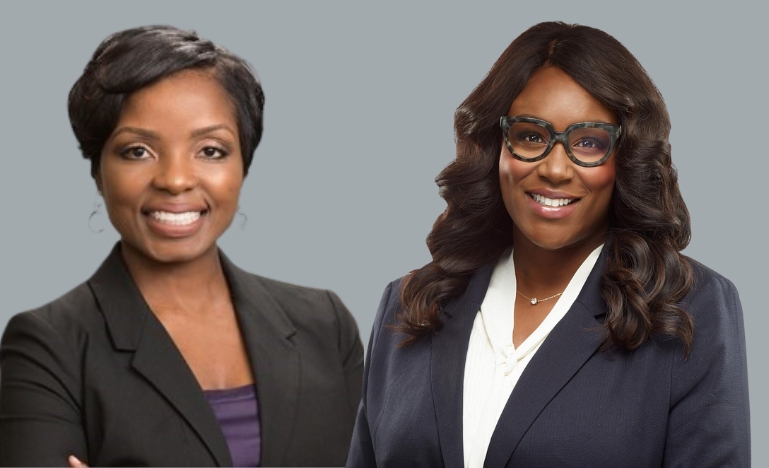Improving inclusion for gender-diverse people
It requires humility and a willingness to learn, but committing a firm to inclusion helps the profession represent the community it serves.

Many law firm leaders are attempting to address the needs of transgender and gender-diverse people by developing initiatives and programs to make their workplace more inclusive.
Charlene Theodore, chief inclusion officer at McCarthy Tétrault, says this continued progress towards inclusion is vital for the legal industry.
“The legal industry has been on a decades-long journey towards full equality and inclusion in workplaces,” she says. “If a firm is committed to LGTBQ inclusion, part of that means looking specifically at gender identity, gender diversity and non-binary people, and making sure your efforts and inclusion initiatives towards the community overall include that.”
Troy Ungerman, Norton Rose Fulbright Canada’s chief diversity and inclusion officer, says law firms need to represent the public they serve.
“The profession relies on us as lawyers to protect the rights of our clients and promote justice and uphold human rights. So for me, to do this effectively, our profession has to reflect the wide range of lived experiences,” he says.
Marredia Crawford, the director of inclusion, diversity and equity for the Americas with Baker McKenzie, says it takes an inclusive culture to sustain the diversity that leaders seek.
In 2021, Canada was the first country in the world to collect and publish census data on transgender and gender-diverse people.
The 2021 census included questions that allowed people who are transgendered or non-binary to specify their gender accurately and not just their sex assigned at birth.
“Now we have data for who may be in the workforce,” says Crawford. “But, just as important, we know the impact is greater than the data. Even if law firm leaders are not aware or they do not know anyone who is trans or gender diverse. You know that those in your firm may be parents, siblings, cousins, or friends to those in that community. And building that inclusive culture and welcoming culture has a far-reaching impact within the firm.”
The Canadian census data showed that 0.33% of those surveyed reported being transgender or non-binary. The numbers of transgender and non-binary people were three to seven times higher for millennials (born between 1981 and 1996) and Generation Z (born between 1997 and 2006).
Theodore says these younger lawyers, some of whom are just joining the workforce, are changing the culture of law firms.
“We are learning all the time how to create a welcoming place for our people,” she says. “As a whole, Generation Z are more likely to want to know what a firm’s values are. These are who your new managing partners and your practice group leaders are. This is who is going to be leading the firm in generations to come.”
Ungerman, who practises in mergers and acquisitions in Toronto, says his law firm has tried to raise awareness of gender-diverse people’s experiences in the workplace. It has also created systems and structures that support inclusion.
Some initiatives at Norton Rose Fulbright Canada include developing a trans-inclusion policy, gender-neutral approaches to communications, allowing employees to choose to display their pronouns and holding education sessions on topics such as speaking about gender identity issues with children.
Ungerman also says his law firm was an early adopter of pronoun policies. He recalls having education sessions to explain the importance to employees.
“Putting your pronouns out there makes it a bit more comfortable for others who are having a challenge in the way the world perceives them,” says Ungerman. “Explaining that to my colleagues has been a really good educational experience.”
Crawford says Baker McKenzie has also developed education opportunities to focus on the importance of names and pronouns to support and affirm gender-diverse individuals in the workplace.
“One thing we like to say all the time is: We are not neutral,” she says. “We are proud to publicly demonstrate our support for all transgender and other gender-diverse individuals within our firm and outside our firm.”
“We want to build a space where people are able to be themselves,” adds Crawford.
Theodore says McCarthy Tétrault tries to embed the principles of inclusion in every aspect of its business. “The days of people sacrificing being their authentic selves in exchange for career advancement and accolades are either gone or they will be gone soon,” she says.
Law firm leaders have to be intentional about their inclusion, equity and diversity strategy and be able to articulate their vision for the future, says Crawford. She recommends that law firm leaders ask themselves: “What do you want to be known for?”
“Inclusion, diversity and equity can’t be siloed and impactful at the same time. Either it will be siloed or impactful, but it can’t be both. It’s important that you are embedding it throughout all functions and it’s visible,” Crawford says.
Ungerman says that leaders must face their fears to create systemic change in their firms. “Letting go of fear is very important,” he says. “My advice to law firm leaders is to approach inclusion from a place of humility. Be humble about what you don’t know, what you haven’t lived, what you don’t yet understand.”
Sometimes saying the wrong thing is alright, provided one is receptive to listening to criticism, getting advice, and not being paralyzed by fear, says Ungerman. “It’s a privilege to be leaders and have the opportunity to make a change. You have to be humble about it and show openness to learn.”


